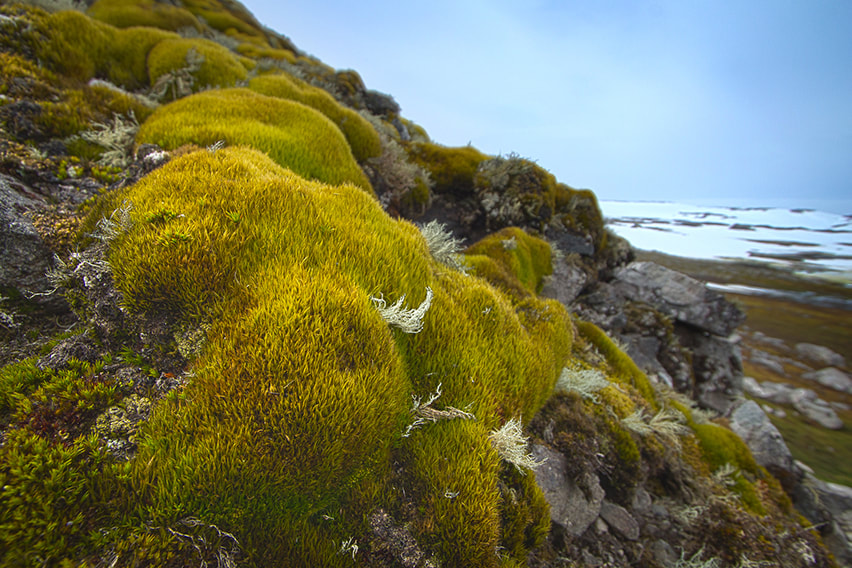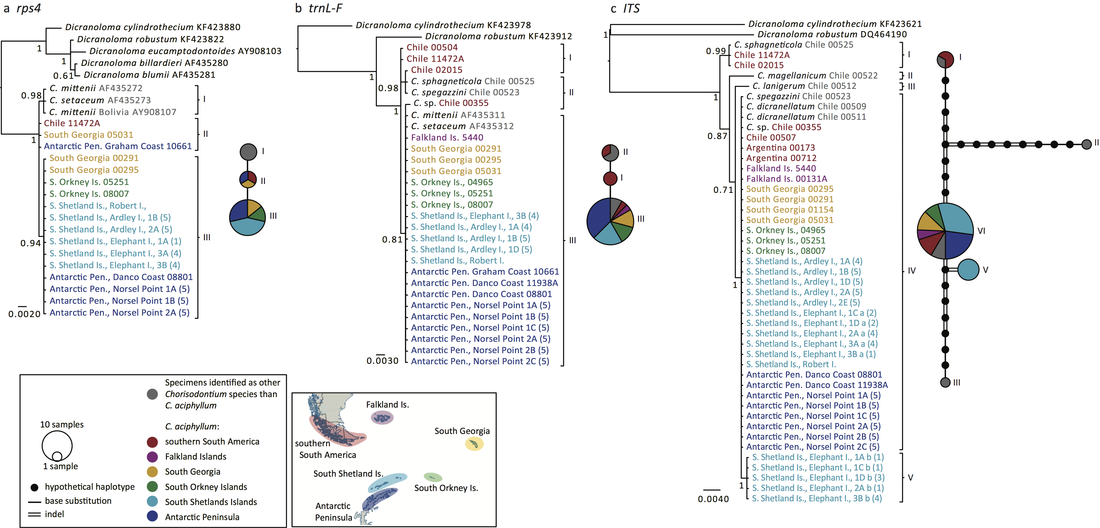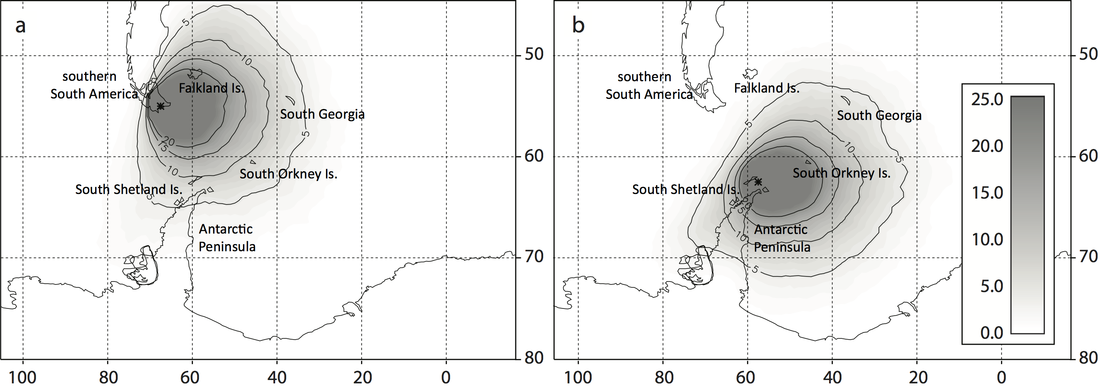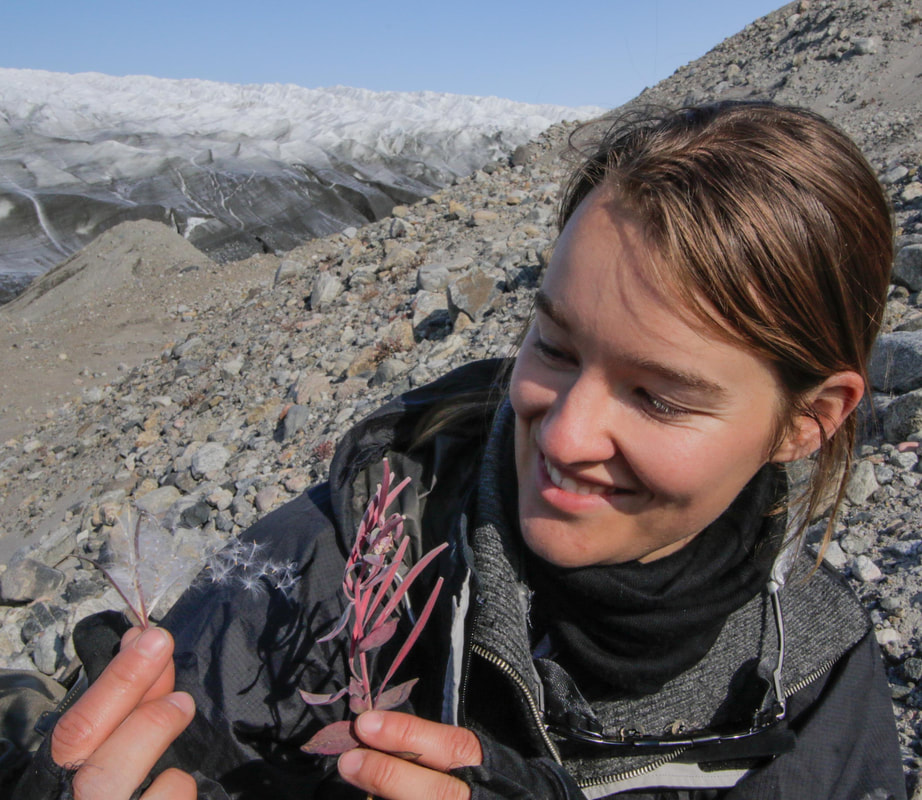|
The connectivity and origin of the contemporary Antarctic biota have become central questions in Antarctic biogeographic studies. A new population genetic study on the moss Chorisodontium aciphyllum, known for its extreme revival abilities as well as having the oldest sub-fossils of any extant plant in Antarctica, revealed no to very low genetic variation between South American and Antarctic populations, suggesting a likely recent (<1 million year) arrival in the Antarctic. This is in contrast with many other species of Antarctica’s extant terrestrial biota, which are estimated to have been isolated in situ on much longer timescales. Old sub-fossils and extreme survival abilities The bank-forming moss Chorisodontium aciphyllum is a pretty extreme plant. The moss occurs in southern South America and into the maritime Antarctic, where it grows to form deep (~1-3 m) moss banks. These peat banks are known to be the oldest sub-fossils of any extant plant in Antarctica; the bases of 1.5 m deep peat banks have been radiocarbon dated at ~5000-5500 years old, and deeper cores may potentially be much older. The peat is also a valuable resource for reconstructing past climate, providing useful data on past moisture and temperature in the maritime Antarctic.
Low genetic variation suggests likely recent (<1 Myr) Antarctic arrival The extreme survival abilities together with the old sub-fossils make C. aciphyllum a particularly interesting species to study for possible long-term survival in Antarctica - i.e. longer than the Last Glacial Maximum (~18-20 kya). However, applying phylogeographic and population genetic methods to both chloroplast and nuclear loci revealed no to very low genetic variation within C. aciphyllum throughout it's range, both between and within Antarctic and southern South American populations (see figure below). This suggests that the plant has been in the Antarctic for a relatively short amount of time, as the populations haven't been separated for long enough to accumulate mutations. Bayesian phylogenetic trees and haplotype networks constructed with plastid (a-b) and nuclear (c) loci reveal no to very little genetic variation between and within Antarctic and southern South American populations of Chorisodontium aciphyllum. For details see study. Exactly how long the species has been present in the Antarctic is uncertain. However, theoretically, applying a simplistic calculation from a predefined substitution rate we would expect one substitution to have happened at least every ~1 Myr in the fastest evolving studied locus. This suggests populations in South America and the Antarctic have likely been separated no longer than one million years, and a minimum of ~5.5 ky, the age of the oldest dated Antarctic C. aciphyllum peat core. It should be noted that this is a very rough calculation due to various difficulties of molecular dating with bryophytes (e.g. lack of fossils and complication of relying mostly on asexual/clonal reproduction). Antarctic may be less isolated for spore-dispersed organisms than previously thought In order to further assess the connectivity of small or spore-dispersed organisms between South America and Antarctica, we modeled the relative frequency and direction of atmospheric transfer events between the regions. These analyses show that small particles transported via regional air masses can clearly cover long distances within a 24 h period (see figures below). The results also reveal a strong asymmetry in directional probability, showing that aerial transfer from southern South America to the northern maritime Antarctic (a) is more likely than vice versa (b). The results show the clear influence of the westerly winds prevailing in the region, and that west-to-east transport is much more likely than east-to-west - and that getting to the Antarctic from South America is easier than the other way around. Dispersal density spatial maps expressed as the percentage of times that an air mass from a given initial location passes within a radius of 200 km, re-created from daily air mass movements within a 24-h period. a and b represent starting locations (shown as asterisks) from southern South America and the northern maritime Antarctic, respectively. For details see study. Reference:
Biersma E.M., Jackson, J.A., Bracegirdle T.J., Griffiths, H., Linse, K. & Convey, P. (2018) Low genetic variation between South American and Antarctic populations of the bank-forming moss Chorisodontium aciphyllum (Dicranaceae). Polar Biology, 1-12. https://doi.org/10.1007/s00300-017-2221-1
2 Comments
|
Hi! I am Elise Biersma, an evolutionary biologist studying polar plants and microbes.Archives
January 2021
Categories |




 RSS Feed
RSS Feed